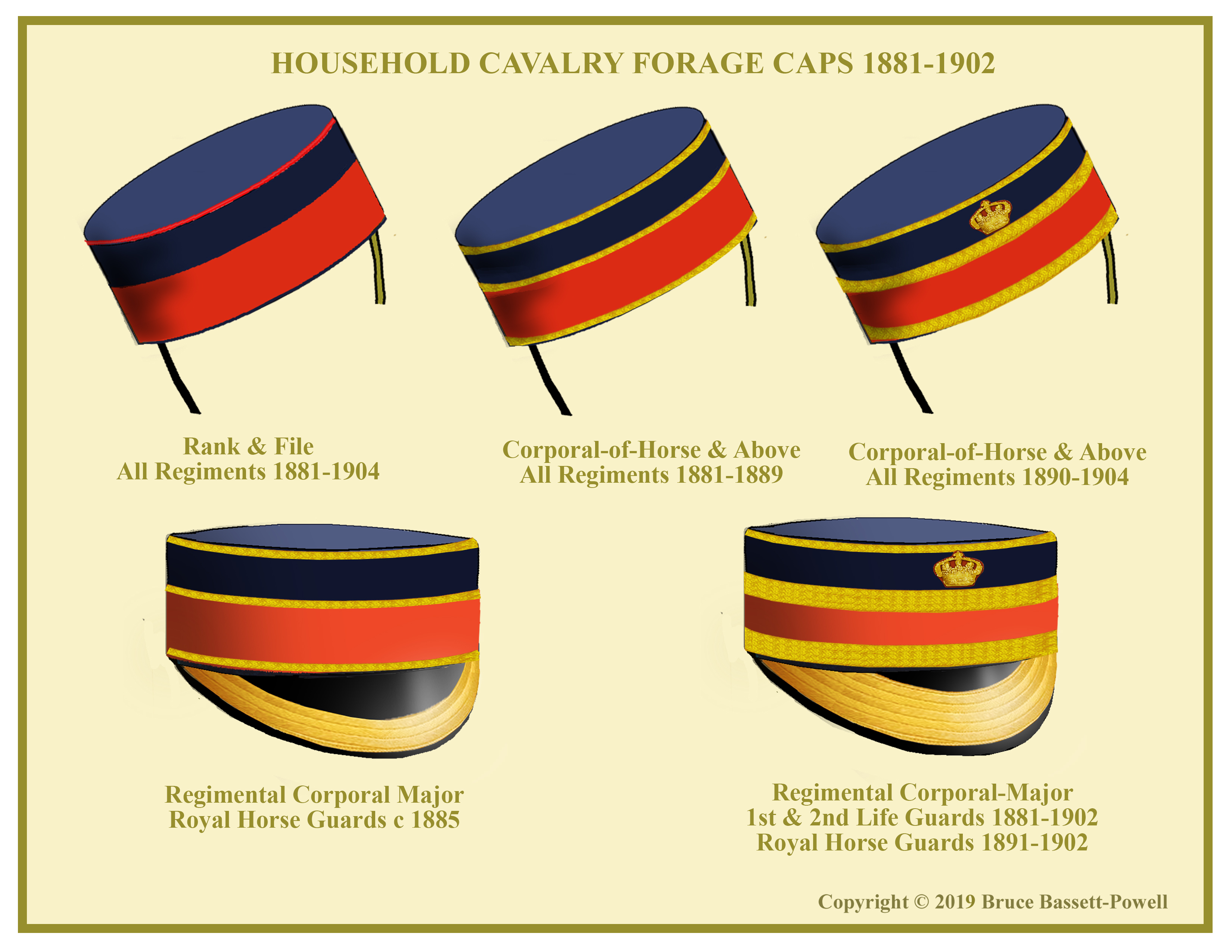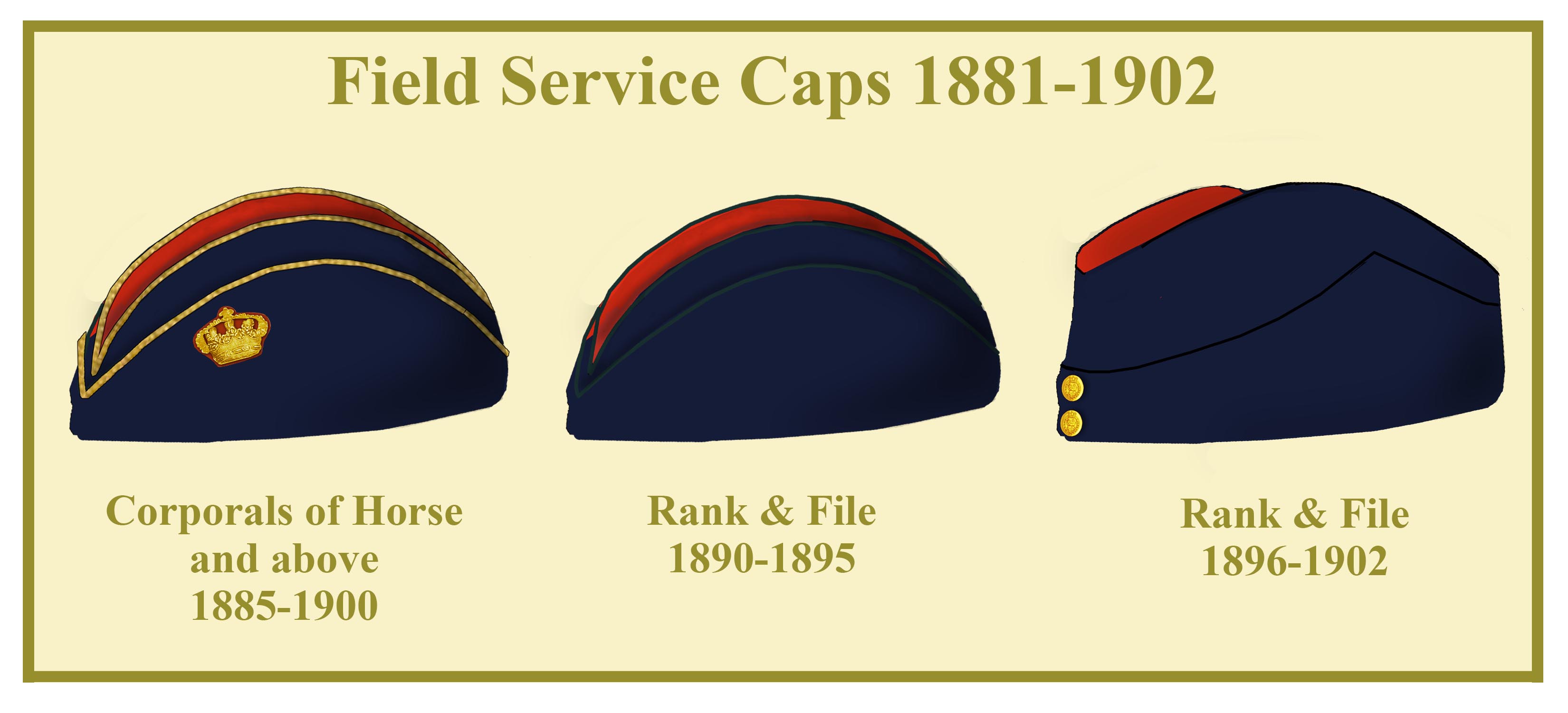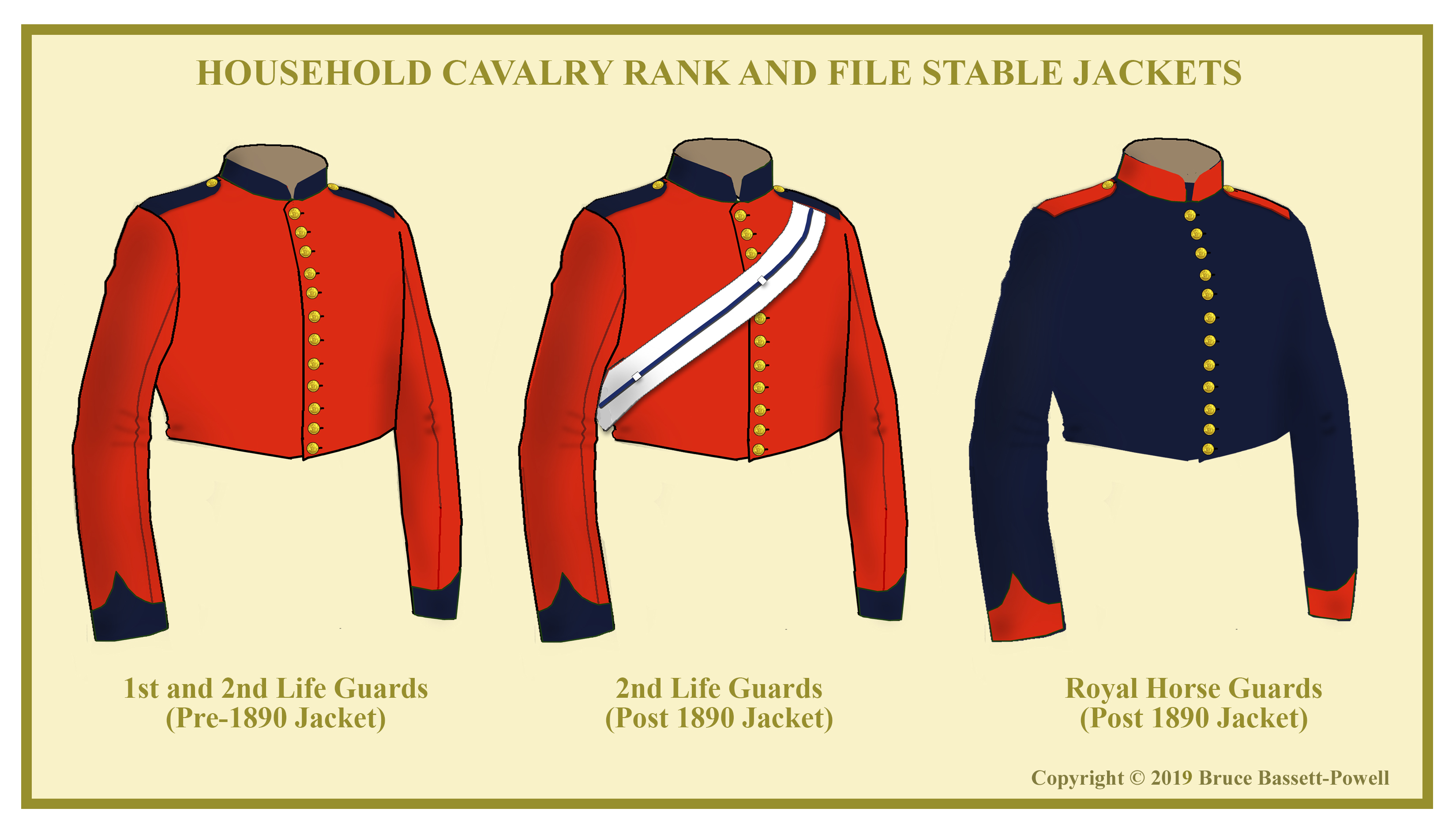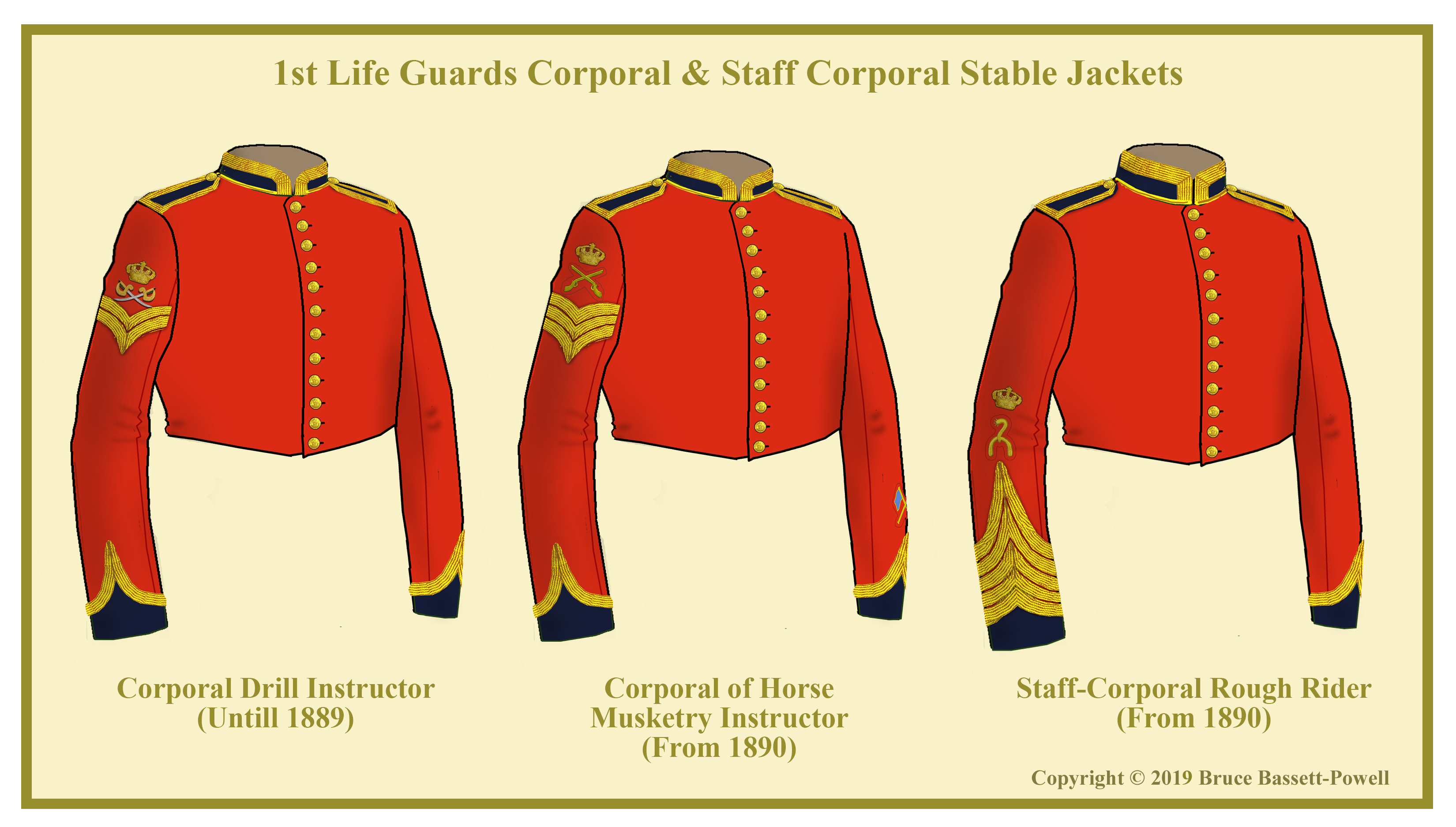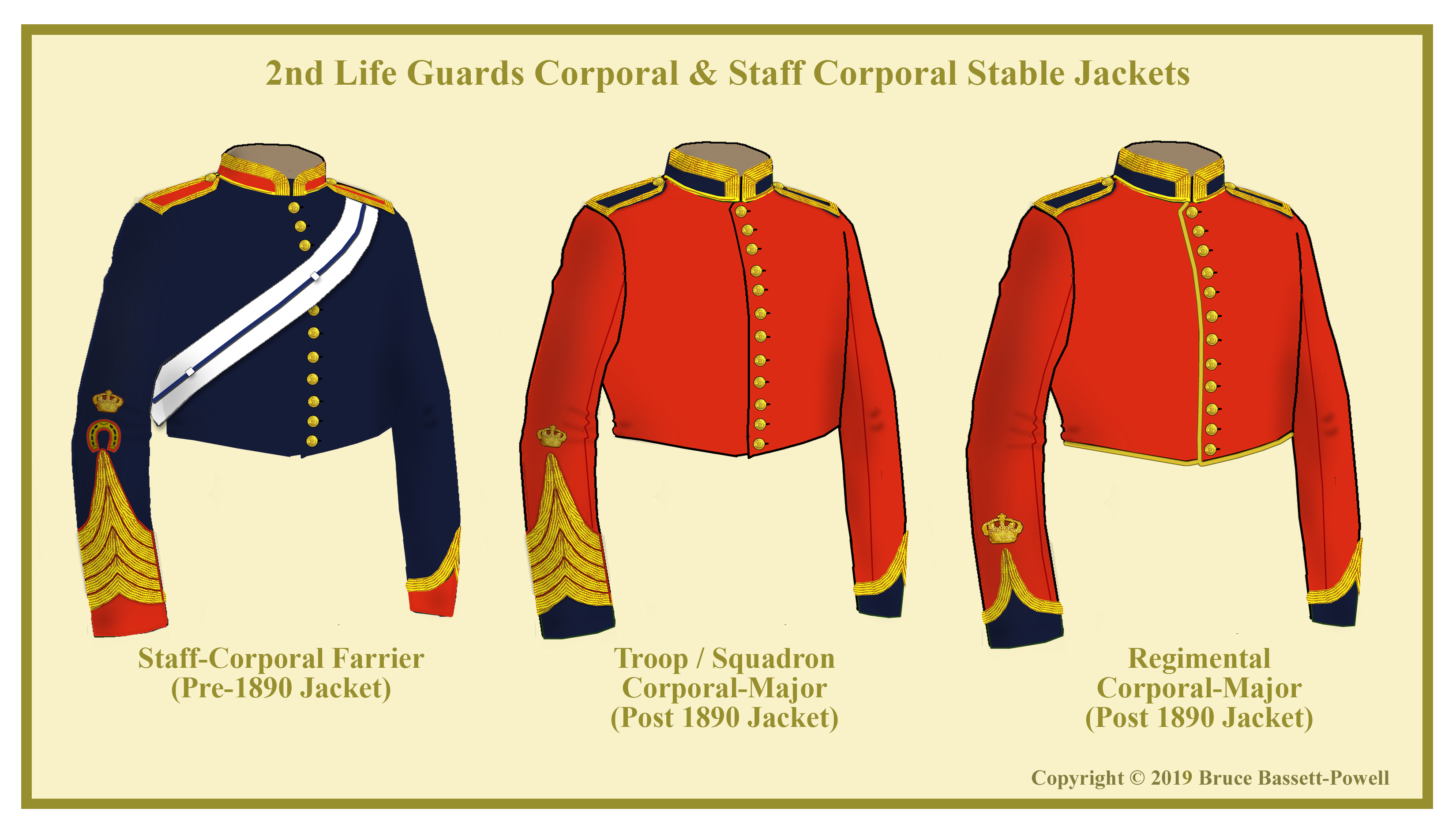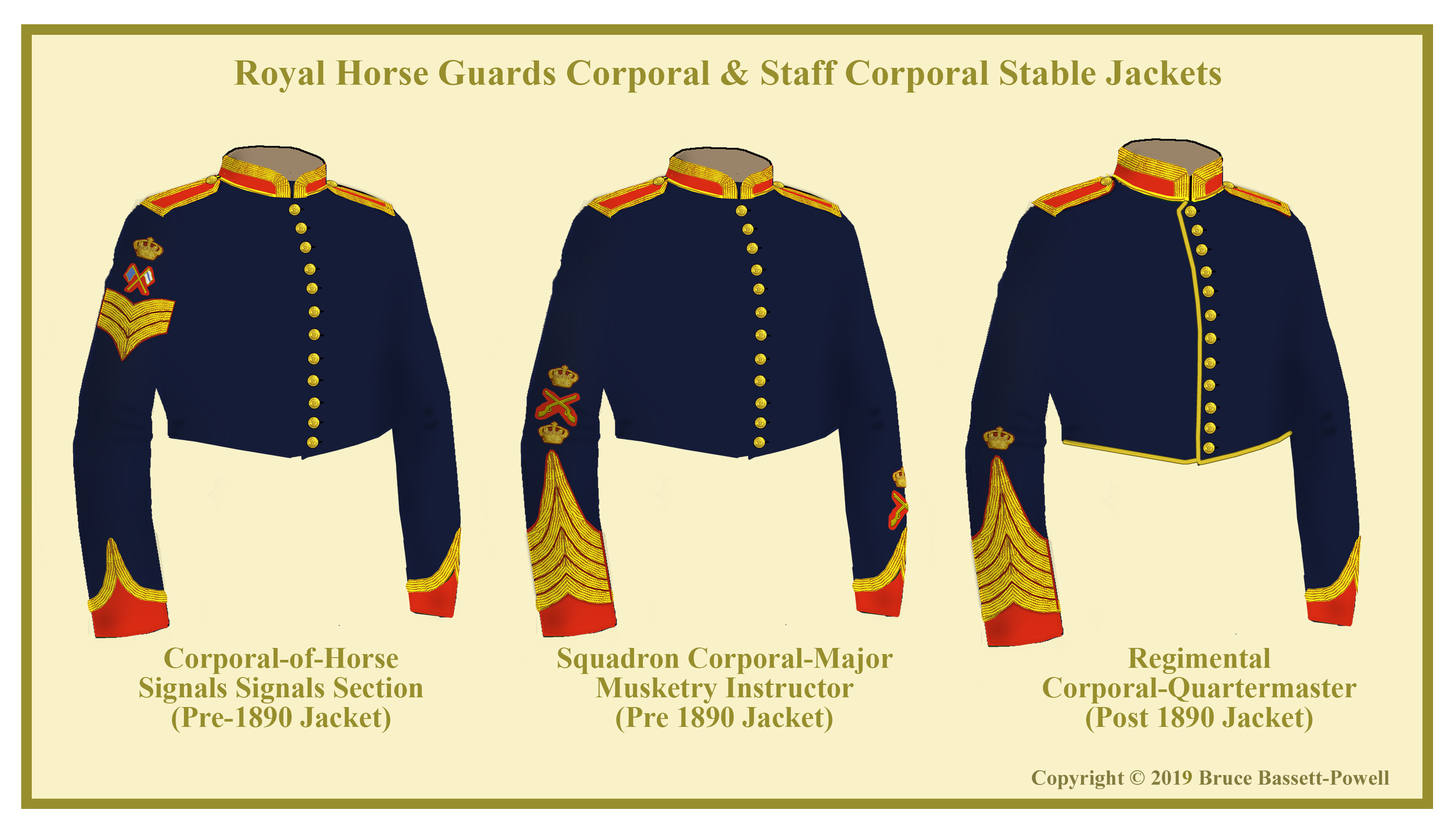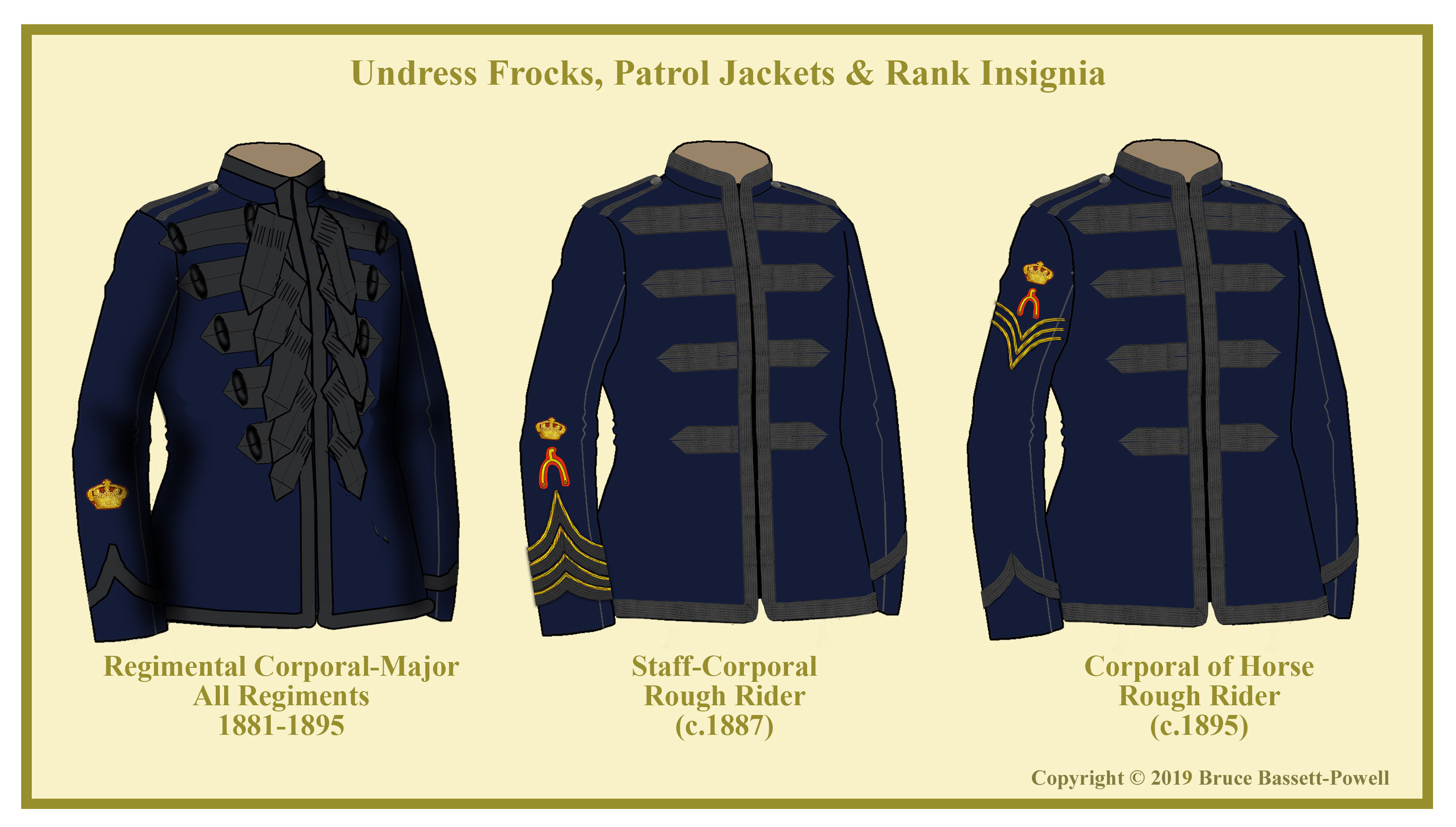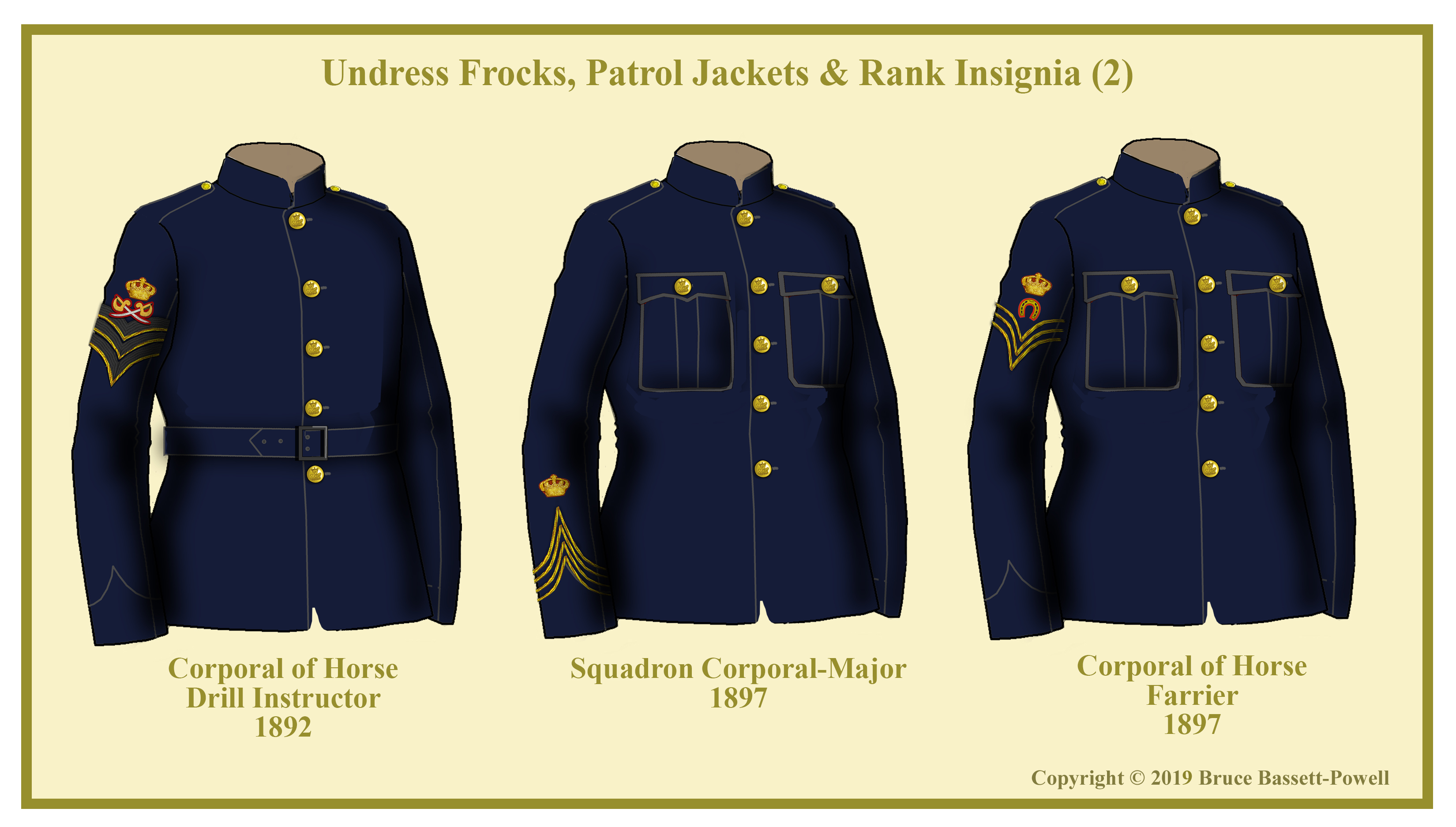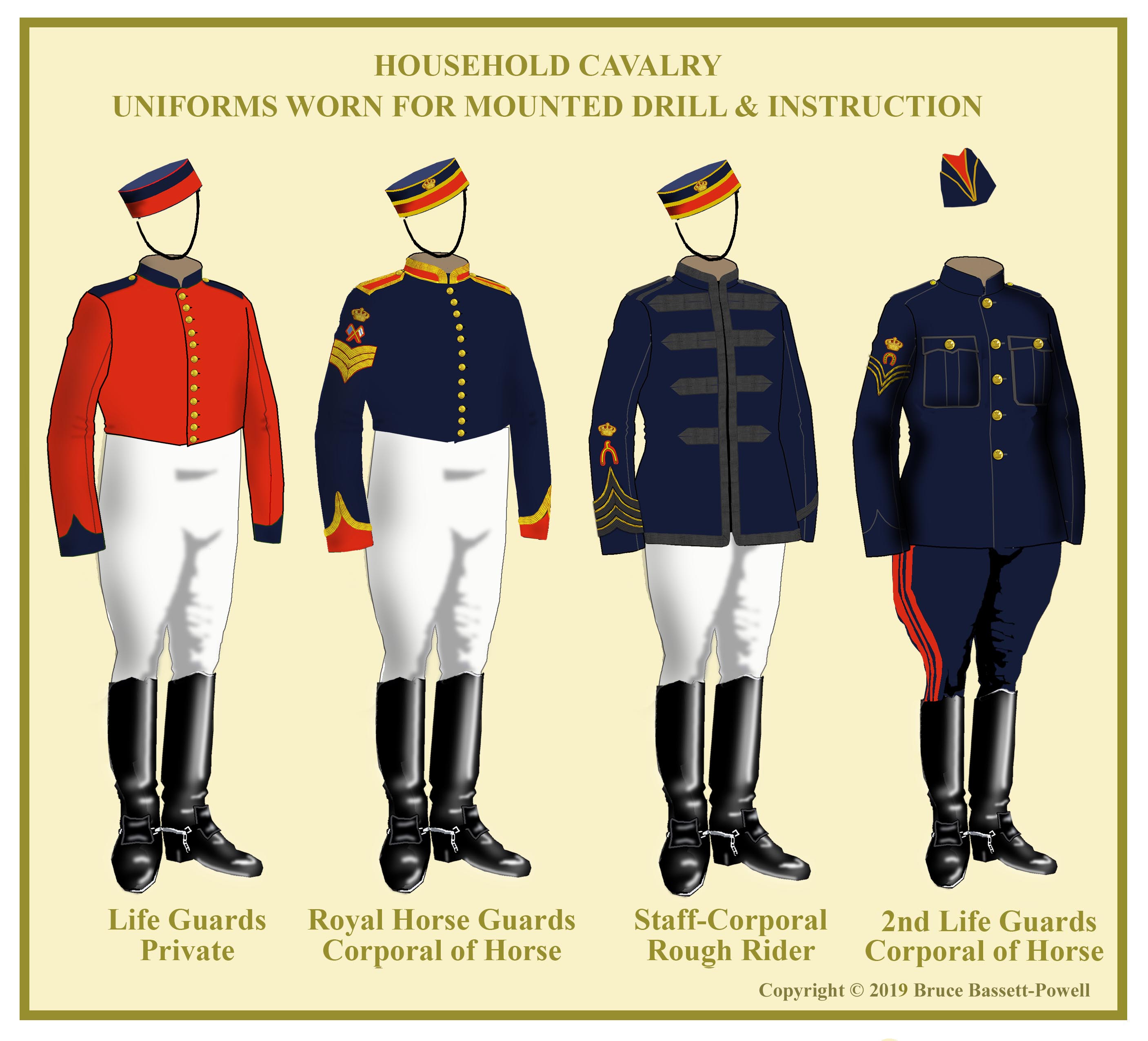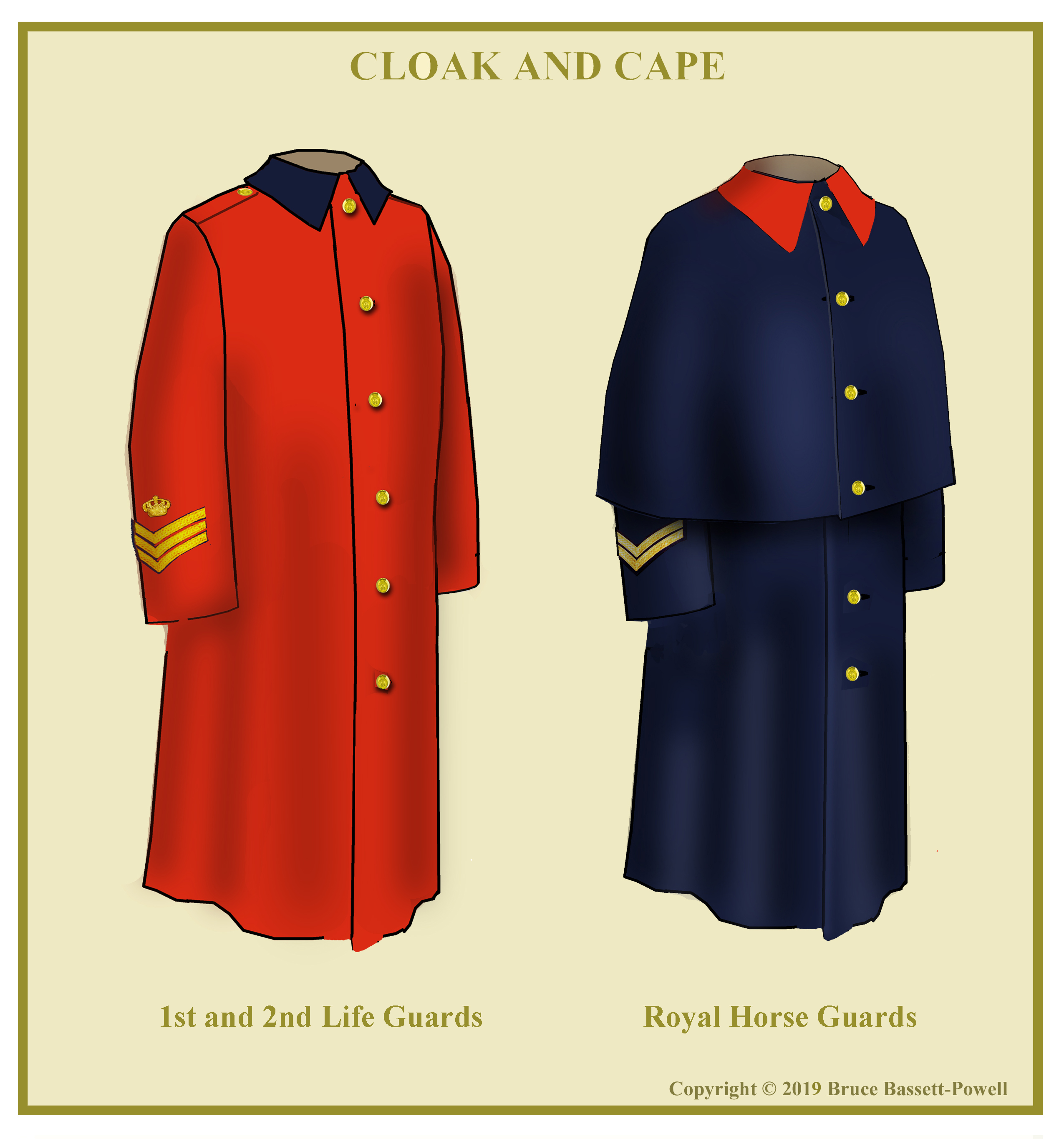UNIFORMS, ARMS & EQUIPMENT - HOUSEHOLD CAVALRY
UNDRESS UNIFORMS OF OTHER RANKS
UNDRESS CAPS
The round forage cap had been worn by the household cavalry since the eighteen-fifties. By 1881 it bore the same dimensions as that worn by regular cavalry and artillery except perhaps a little deeper. It was dark blue with a scarlet band and piping around the crown and was the same for all three regiments. Senior ranks of Corporals and Staff Corporals had worn a round forage cap with peak until the mid-1870s. It had gold bullion edging to the peak and thin gold piping above and below the red band. By the late 1870s this cap was only worn by the Regimental Corporal-Major of each regiment and had acquired a small Albert crown above the band. After 1881 the piping above and below the scarlet band had become ¼” lace.
Also by the mid-seventies corporals and staff corporals wore the round peak-less forage cap with gold piping around the crown and above and below the scarlet band. From 1881, the piping on the scarlet band had become ¼” gold lace and above it the Albert crown. Photographs indicate that the actual dates of adoption of these features were not universal until about 1885. This could have been because of the Egyptian War of 1882 had postponed issue from stores.
FIELD CAPS
The folding field caps were similar to those of the rest of the army. The Austrian (Torin) pattern cap was blue with a scarlet top and worn by the rank and file for stable duty and other barrack wear. For Corporals and above it had gold piping on the flaps and crown. (Similar to officers). Some Photographs show staff-corporals with the Albert crown on the left side. However this did not appear to be universal. When the 1895 pattern folding field cap was introduced it was again blue with scarlet top. It seems that Corporals and above continued to wear the round forage cap in preference and there are few photos showing them a field cap before the Boer War.
STABLE JACKETS
The Household cavalry stable jacket was very simple. The basic ground colour had facing colour pointed cuffs, collar and shoulder straps. It had twelve buttons down the front and two at the shoulder straps. Corporals and above had ½” gold lacing above the cuffs, around the collar and on the shoulder straps. In addition, the Regimental Corporal-Major and Regimental Quartermaster-Corporal thin gold piping down the front and lower edges.
RANKS
Although no rank chevrons were worn on the dress uniforms, this was not the case on the undress uniforms.
They basically fell into three categories:
Corporals: Two-bar chevrons points down on the upper right arm surmounted by an Albert Crown.
Corporal of Horse: Three-bar chevrons points down on the upper right arm surmounted by an Albert Crown.
Staff Corporals: Four-bar chevrons points up on the lower right sleeve surmounted by an Albert Crown.
Regimental Corporal-Major: A large Albert Crown on the lower right sleeve.
Unlike the regular army, the gold rank chevrons of the Household Cavalry were created by the regimental tailors.
On the stable jacket the chevrons were of 1 inch gold lace on a scarlet backing. These were more apparent on the jackets of the Royal Horse Guards.
FIELD SERVICE AND UNDRESS FROCKS
The Regimental Corporal-Major wore a patrol jacket with mohair lacing down the front. It was also worn by the Riding Master and other regimental staff.
Photographs show the rough-rider and farrier staff wore a blue frock with wide black mohair lacing down the front and for double bars across the front ending in points.
A plain blue frock with five brass buttons down the front and a cloth belt with plain buckle was worn by all ranks from about 1890 to 1896. After 1896 the standard five button blue frock with two breast pockets was worn. The Household Cavalry did not wear shoulder chains.
In the early 1880s rank badges worn on blue frocks were of 1 inch black mohair lace with thin gold lace on the edge. By the mid-1890s these became plain thin gold lace on a blue backing which remains the case to the present day (although they are machine made).
DRESS FOR MOUNTED DRILL AND INSTRUCTION.
For mounted drill and instruction, the white breeches were worn with the knee boots. Later in the century, the blue breeches became more common for most mounted exercises.
CLOAKS & CAPES
The cloaks and capes worn by the Household Cavalry were much the same as those worn by the rest of the cavalry. Unlike for officers, the cape for other ranks of the Life Guards was scarlet with a blue collar
Double click here to add text.



